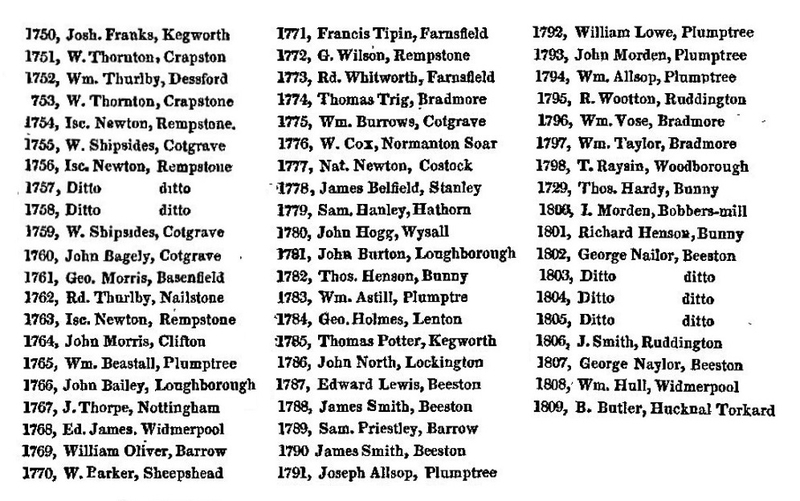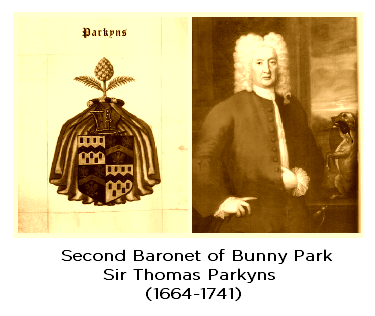The First Nobleman of English Pro Wrestling.
Nottinghamshire's second baronet of Bunny Park Sir Thomas Parkyns (1664-1741) became famous all around England as an author of the first professionally written wrestling manuals. These include, “Inn Play or Cornish Hugg Wrestler” as well as a set of “General Rules of English Wrestling,” the fullest edition of which was published in 1727.
In his wrestling manuals, Parkyns spoke of the popularity and advantage of Close Wrestle (referred to as In Play of Bedfordshire, or Hugging) in comparison to the Arm's Length Wrestle (referred to as Out Play of Norfolk, or Tripping). Those two types were the most common English folk wrestling styles and both were incorporated into the traditional English folkstyle wrestling called the Catch-hold wrestling. Catch-hold was considered a loose wrestling style, or freestyle in his manuals Parkyns says that he "taketh what he pleaseth of him." In that style an initial hold doesn't exist, neither does any applied hold needed to be maintained during the match as opposed to in fixed hold styles. For example, let's say in fixed hold wrestling styles which were popular in Magna Britannia around the same time, such styles as Back-hold and Collar-and-elbow it wasn’t allowed to break a taken hold.
In English Catch-hold the wrestler was allowed to take (catch) any hold of his opponent above the waist and throw him as he could; and the noble art of tripping and hooking (use of feet and legs for throwing opponent to the ground respectively) played very important role in that style as well. The holds were not restricted to any sort of garments (as in Cornish/Devon) but also could be applied directly to the parts of the person’s body (neck, arms, and torso).
The fair fall was counted when any “two joynts” (such joints of the person’s body as shoulders, hips, knees, ankles, elbows, and wrists) simultaneously hit the ground, and 3 foils (if either of two wrestlers fell upon any part of the body) were a substitute for one fair fall. All matches were 3 out of 5 fair falls. The wrestler would wear a waistcoat and shirt. In England the definition of “two joints” differed from place to place. Generally it stood for the combination of shoulder and hip on the opposite side. According to the old West Country traditions it was one shoulder and the heel on the opposite side.
Parkyns also established an annual professional championship wrestling tournament at Bunny, Nottinghamshire. That happened first time in English history. The Bunny Championship Wrestling existed for many years after Parkyns’ death. That pro wrestling title was dominated by the athletes from Nottinghamshire and Leicestershire. Also it was Parkyns who basically established a new profession that of pro wrestler. At his place, he had several men whom he employed for the purpose of entertaining his friends and himself with wrestling exhibitions (matches).
A 1745 news report speaks of the "greatest wrestling match that was ever seen in England" (tourney) between the men from Nottinghamshire, Rutlandshire, Buckinghamshire, Hertfordshire, Derbyshire, and Middlesex for the large Silver Tankard. Notably, the wrestling championship’s program doesn't mention if the West Country’s or North Counties’ champions participated in it. This makes sense, since in the first half of XVIII century, the epicenter of organized English Catch-hold pro wrestling (after the Parkyns fashion) was located in Nottinghamshire and Derbyshire. Neither Cornish/Devon nor Cumberland/Westmorland sportsmen ever competed in Parkyns’ Catch-hold.
Notably, one of the most famous matches of XVIII century made "by the wrestling rules of Bunny" (Catch-as-catch-can above the waist) was between Parkyns' favorite pro wrestler Richard Allin of of Hucknall, Notts (aka "Wrestling Dick Allen”) and Richard Trubshaw of Colwich, Staffordshire (1689-1745). The match took place at Repton, Derbyshire and was won by Trubshaw. Back then, pro wrestling exhibitions (matches) were usually performed on a 15 yard wooden stage which was erected near a wooden stand with seats, with the maximum capacity of up to 5,000 spectators.
The full list of the Bunny Ring pro wrestling champions appears on Pages 205-206 of the book called “Walks Round Nottingham” (published in 1835) by a sailor and journalist by trade named “Captain” Matthew Henry Barker (1790-1846) who wrote it under an assumed name of “A Wanderer.” The mentioned above list of champions as well as some 1700s-1800s newspaper references to the Bunny Pro Wrestling Ring will follow this article.
© 2021 Ruslan C Pashayev All Rights Reserved.
1820s Notts Champion Wrestler - Joseph Butler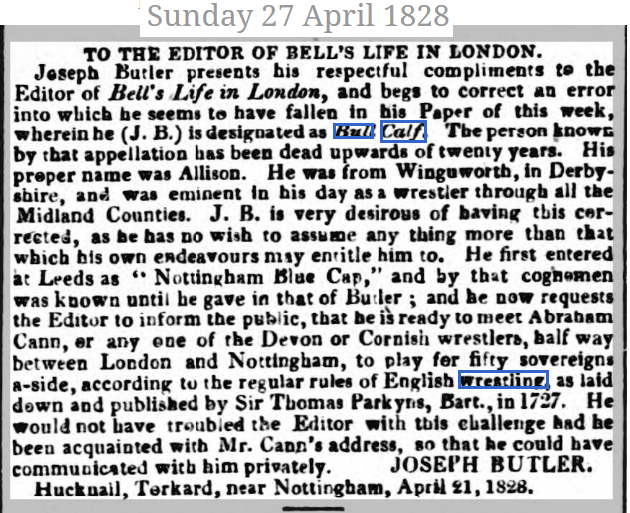
1782 Bunny Wrestle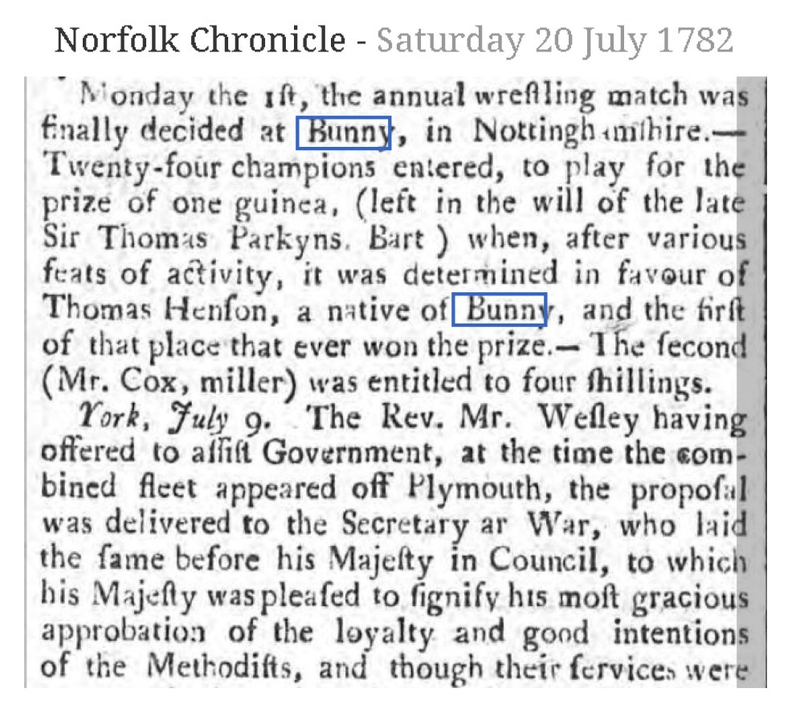
Butler Young Ruffian 1821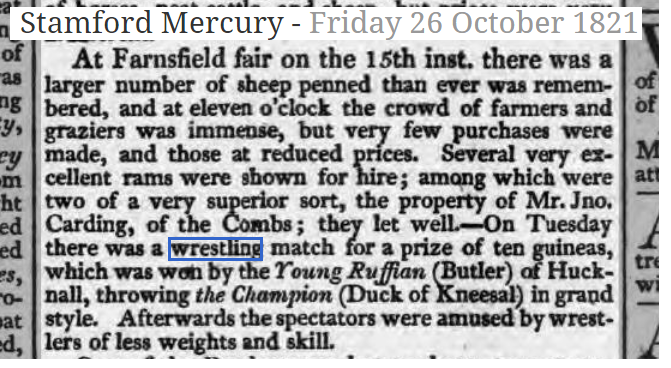
1831 bunny rules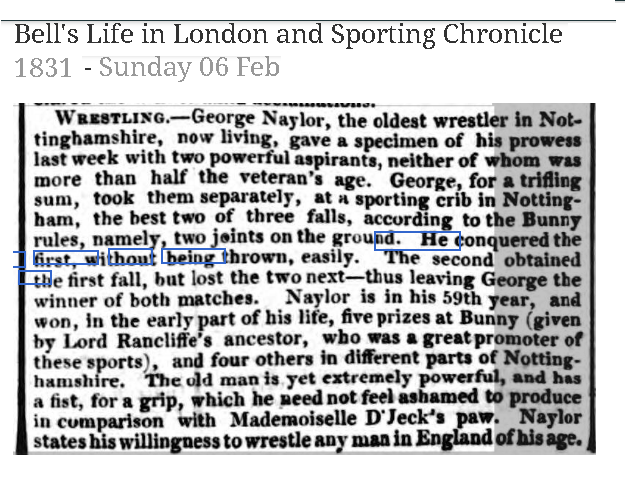
List of Champions